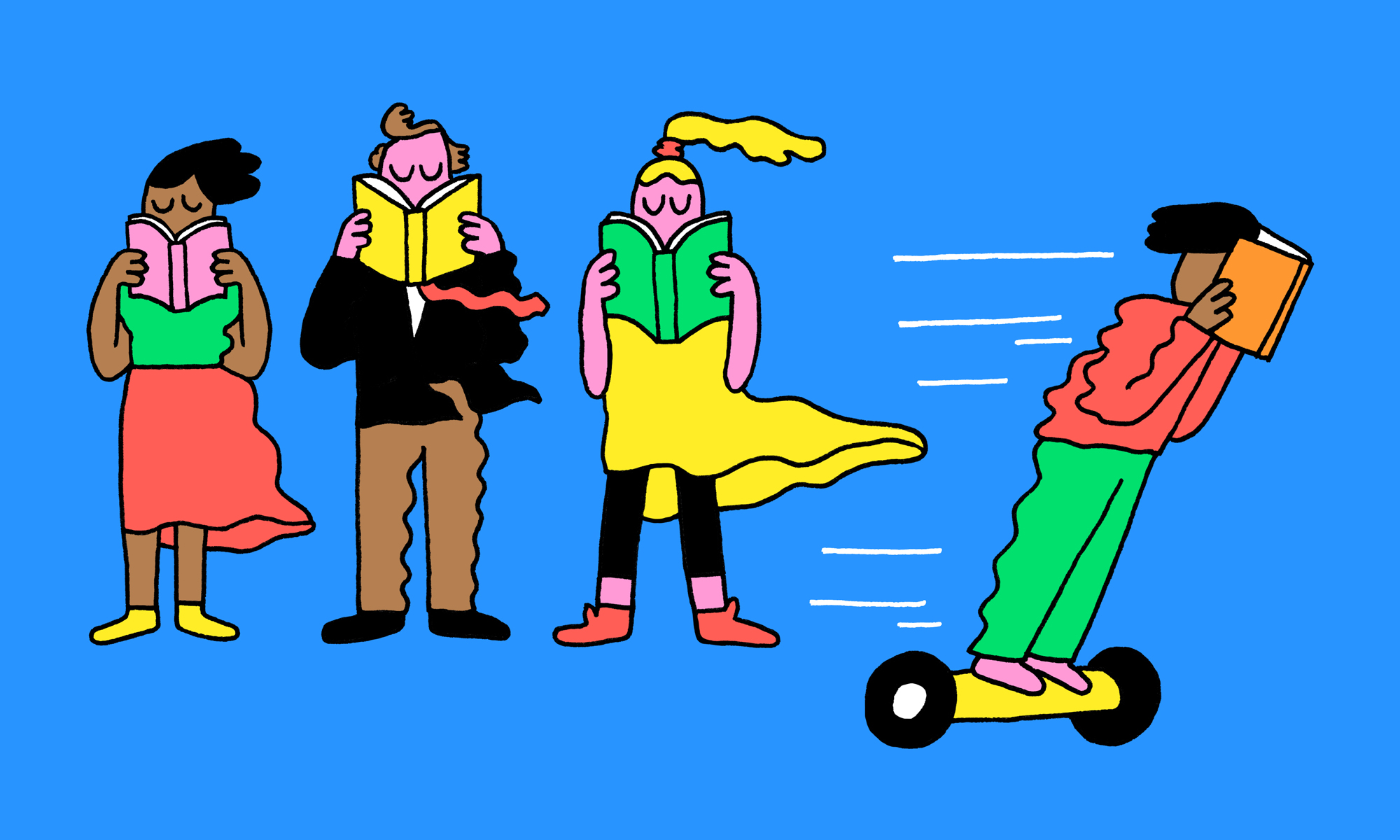Can you actually read that fast?
Let's take a look at 3 common speed reading methods that claim to increase reading speed.
Reading time: <5 mins
Bigger bites
We start with the idea that fast readers can bite large areas of the page. Similarly, a 1962 study mentions a person reading 10,000 words per minute and making only 6 cuts per page - apparently not following the lines of the page at all. text.
As suspected, comprehension was not measured in this study. Other research has shown that good comprehension can only be achieved if readers follow the lines. Also, text in the peripheral part of your field of vision cannot be understood.
A 1987 study reported only 1 correct response out of 30 times when the reader was tested for text more than three letters from where it was staring. The fixations are small, and you can't understand text that isn't one or is very close.
But what about eliminating sub-vocalization?
Some speed-reading courses agree that you have to read the text to understand it, but your "inner voice," which basically tells you what you're reading, is slowing you down. If you could somehow eliminate this subvocal language, could you process the text faster?
Again, research shows that this tactic is unlikely to work. Even if you don't read aloud, when you read your brain sends signals to your vocal cords. NASA scientists have even developed an instrument to detect and measure these signals.
Scientists have conducted studies in which they have attempted to get participants to eliminate sub-vocalization. Reading seems inseparable from our auditory processing abilities, and trying to separate them does more harm than good.
RSVP as soon as possible
So let's move on to our third method - Rapid Serial Visual Processing, or RSVP. These apps work by displaying each word you read in rapid succession. The words are fixed in one place, which eliminates the need to move your eyes while the words change.
The RSVP technique has its origins in a device called a tachistoscope, that were used during World War II to train fighter pilots to more quickly identify other aircraft as friendly or enemy, and in the 1960s some schools began using them to increase reading speed.
Many modern RSVP apps have their own unique features – for example, how many words you want to display at once, and some adjust each word to help the eye reach its optimal detection point.
One of the main problems is that RSVP systems present chunks of words and force your brain to process them all at once. But meaning comes from left to right (in most cases) and not many chunks can be gruped. Also, at the normal reading speed, our brain is able to intelligently capture the most important words, while spending less time on functional words (a, the, or,..).
Skimmers and speed readers focus on a nearly equal sets of content and meaningful words. So RSVP makes your working memory a bottleneck, because we now struggle to keep up as all this text flows at a steady pace.
Another catch with RSVP apps is that they don't allow regression, and going back to re-read text you've already (miss)read. In 2014, Elizabeth Shotter concluded that by not performing the regression negatively affected understanding.
The usefulness of these three reading learning techniques is diminishing. Does that mean they are all useless?
Of course not!
There are still people that read fast and they comprehend the text really good. What we can do is use those techniques and build on them and create better exercises.
So comes Reading Speedster!
I created an app using the ideas from a lot of methods and techniques, not just these 3 and made 8 games that hit all the of the known aspects of reading so that anyone can speed read. If you have an android 5.0+ device, I urge you to test it out: play.google/store/ReadingSpeedster

Comments
Post a Comment